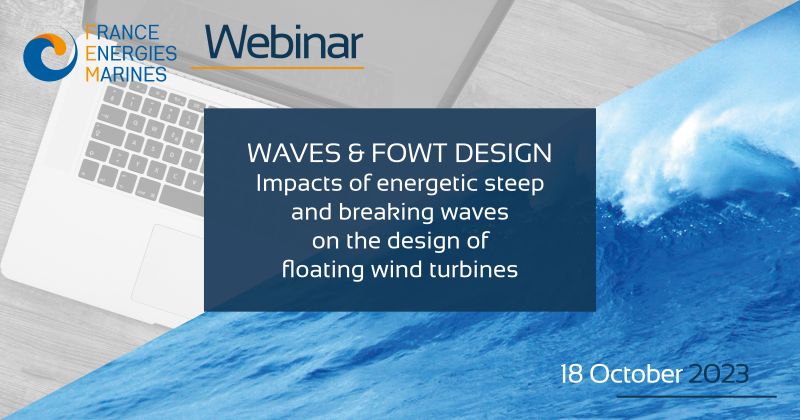
Background
Although a vast amount of literature exists to describe methods to treat extreme wave loads on bottom fixed wind turbines, very little guidance is available when it comes to floating ones. The problem of extreme wave loads differs due to at least two major aspects: floating wind turbines are deployed in deeper water where wave conditions deviate from what is observed in shallower water bottom-fixed wind farms, and floating wind turbines have their own dynamics that must be accounted for to assess extreme wave loads. The DIMPACT R&D project was set up go further in the definition of specific engineering methods to account for the effect of breaking waves on floating wind turbines.
The project is coming to an end. The webinar to be held on 18 October from 10:30 to 12:30 (CEST) will present the main results of DIMPACT and illustrate their applicability to the sector.
PROGRAM
The preliminary programme is as follows:
- Context of the project and links between the various work packages – Jean-François FILIPOT, France Energies Marines
- Motion and attitude of floating offshore wind turbine in high seas – Christophe PEYRARD, EDF R&D
- Wave tank experiment and load severity – Florian HULIN, France Energies Marines, Ifremer and ENSTA Bretagne
- Hydrodynamics loads on floating wind turbine – Paul RENAUD, France Energies Marines
- Implementation of engineering methods from DIMPACT project in OpenFAST tool – Camil MATOUG, France Energies Marines
- Use of the project results to update technical documents – Speaker to be confirmed, DNV


